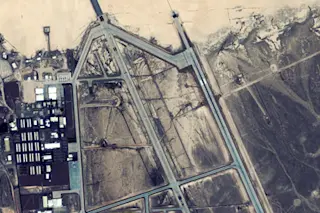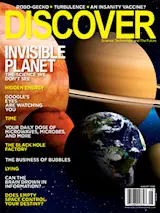In a generic-looking glass and concrete office building just a few miles from Washington Dulles International Airport, an independent company is—with the full blessing of the government—helping to peel away the last earthly vestiges of cold war secrecy. Unlike Beltway defense companies, where security often starts at the ground floor with guards and gates, GeoEye, one of two U.S. companies selling commercial satellite imagery (the other is DigitalGlobe), is notably open-door until you reach the fourth-floor offices, where a friendly secretary asks, apologetically, whether the visitor is a U.S. citizen.
Inside the company’s headquarters, GeoEye vice president Mark Brender provides a tour of operations. Young engineers in a NASA-style mission control room follow a GeoEye satellite, which is at that moment hurtling around Earth some 423 miles above the ground. Across the hall, GeoEye employees field calls from customers ranging from government agencies to insurance companies. CNN plays continuously on ...















